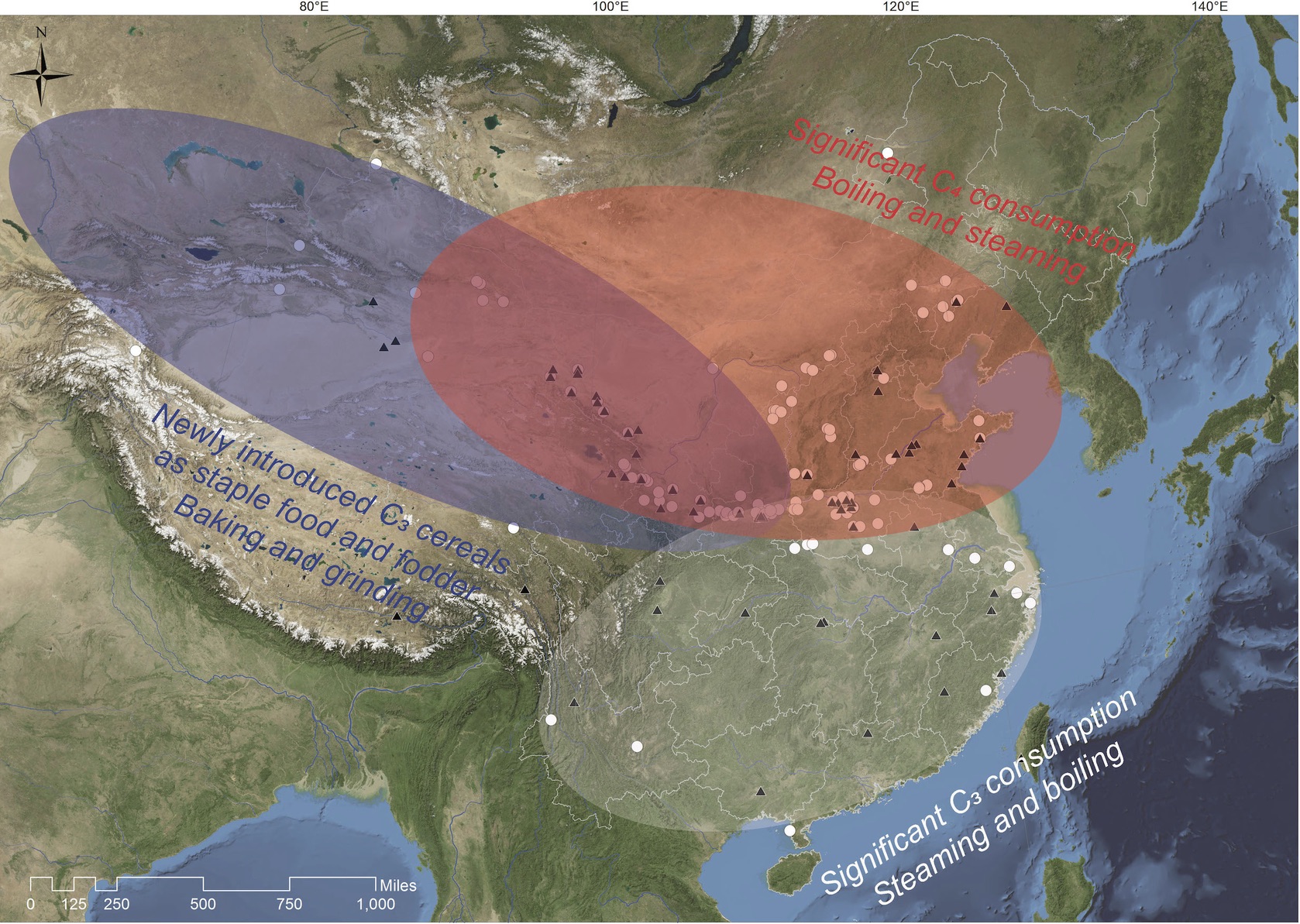Over the last 15 years, archaeologists have challenged outdated ideas about humans controlling nature. Writing in the Proceedings of the National Academy of Sciences, Xinyi Liu in Arts & Sciences at Washington University in St. Louis argues for a new conceptual bridge connecting the science of biological domestication to early food globalization.
Tag: Domestication
Early crop plants were more easily ‘tamed’
Plants are capable of responding to people and have behaviors comparable to tameness, according to authors of new research that calls for a reappraisal of the process of plant domestication, based on almost a decade of observations and experiments.
’Til the cows come home
Meat and dairy played a more significant role in human diets in Bronze Age China than previously thought. A new analysis also suggests that farmers and herders tended to sheep and goats differently than they did their cows, unlike in other parts of the world — keeping cows closer to home and feeding them the byproducts of grains that they were growing for their own consumption, like the grass stalks from millet plants.
What the dingo says about dog domestication
Worldwide, dogs (Canis familiaris) are certainly the most common domesticate (900 million according to the World Atlas) and are sometimes used as a proxy for human presence. Dogs were the first and therefore arguably most important species ever to be…

Local cooking preferences drove acceptance of new crop staples in prehistoric China
The food preparation preferences of Chinese cooks — such as the technological choice to boil or steam grains, instead of grinding or processing them into flour — had continental-scale consequences for the adoption of new crops in prehistoric China, according to research from Washington University in St. Louis. A new study in PLOS ONE led by Xinyi Liu, associate professor of archaeology in Arts & Sciences, focuses on the ancient history of staple cereals across China, a country well known for its diverse food products and early adoption of many domesticated plants.

Grain traits traced to ‘dark matter’ of rice genome
Domesticated rice has fatter seed grains with higher starch content than its wild rice relatives — the result of many generations of preferential seed sorting and sowing. But even though rice was the first crop to be fully sequenced, scientists have only documented a few of the genetic changes that made rice into a staple food for more than half the world’s population.